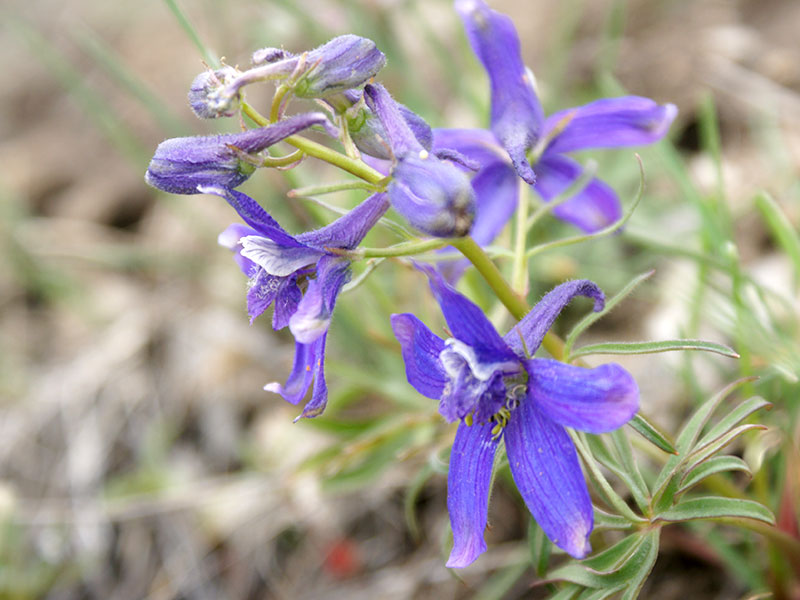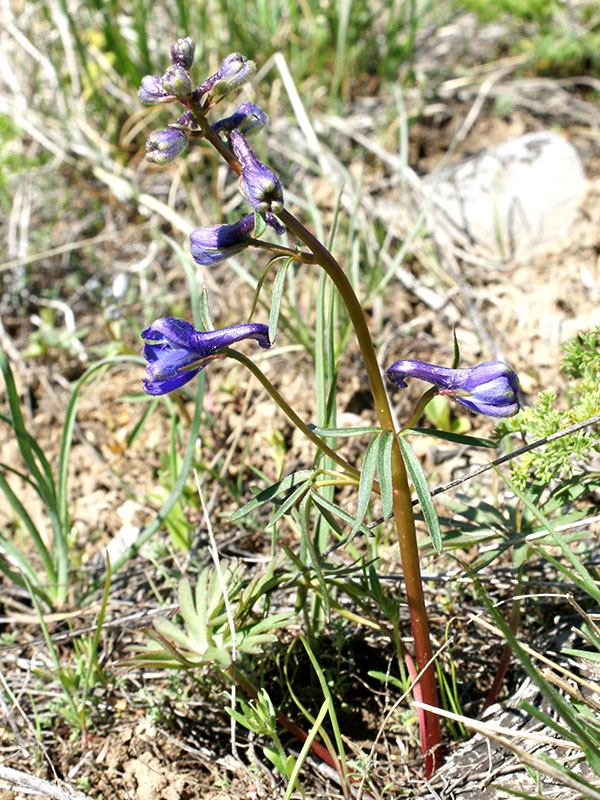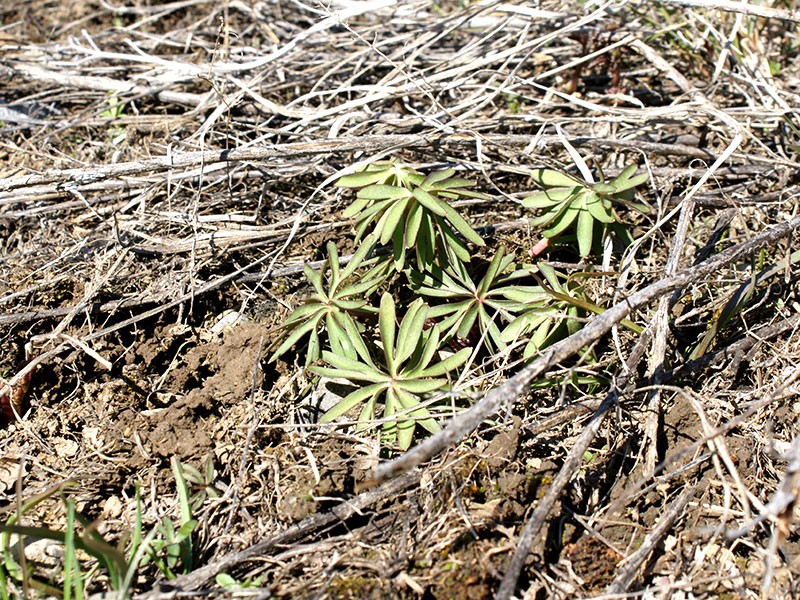Delphinium bicolor / low larkspur
- short plant with a spike of purple flowers
- individual flowers have a pronounced spur out the back
- leaves are few, round, deeply lobed, about the size of a quarter
- widespread throughout the valley and on the hills
- appears and blooms soon after snowmelt
Also known as: little larkspur, flathead larkspur, blue-and-white larkspur
The low larkspur is a beautiful little plant, both vegetatively and in flower. It grows and flowers early in the spring, just around snowmelt (often at the edges of retreating snow, if it retreats slowly enough). It is essentially ephemeral – in fast and out fast – disappearing by early summer. Look for it in mountain forests, in foothill scrubs, in sagebrush areas with shallow soils, or on disturbed sites that have been sitting around for at least a little while. I find it in my neighborhood on vole dominated abandoned pastures, in ditches, in rocky sagebrush communities, and more.
Basically, low larkspur is tolerant of a wide variety of soils and moisture condition. Most generally, it grows in full sun, but based on observations on a sagebrush slope, it can tolerate at least partial shade.
There are two main ways to recognize low larkspur. The first, before it even think about blooming, is its leaves. Different sites fail to describe these well in a number of ways, so looking at the gallery might be the best idea. Basically, they are round, coming off a central point, and divided into many narrow segments. Describing them as a round doily might be as good as anything, if you know what a doily is.
The stems are also characteristic, being green with reddish bases, the red sometimes extending quite a way up. The leaves are all basal.
With the flowering stalks, the plants can be as much as 16 inches tall. The flowers are somewhat complicated and have a long purple/blue spur out the back that is about the same length as the rest of the flower. The “front” of the flowers has two pairs of spreading, deep blue sepals up to an inch long, the lower pair longer than the upper. The upper petals are white with blue markings while the lower ones are whitish to deep blue. The best thing to do is look at the photos; larkspurs are quite distinctive.
Low larkspur is a perennial with a thickly branching root system but reproduces mainly by seed. It is pollinated by bees primarily.
Note: all parts of all larkspurs are toxic to humans and animals. As one site noted, in southern Idaho, cattle poisonings may be as high as 30 per year, while wolf related losses are much less, but no one is adamant about eliminating larkspurs. It is a hint, nevertheless, not to put them in your mouth.
| Color | |
|---|---|
| Family | |
| Blossom size | |
| Inflorescence size | |
| Inflorescence type | |
| When? | |
| Where? |



